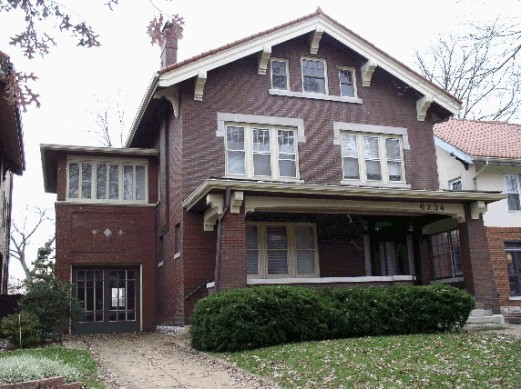July 18, 2006
Obscure Architectural Term of the Day!
Well, it’s not really THAT obscure, but it’s still interesting nonetheless:
BUNGALOW. A single-storey house. The term is a corruption of a Hindustani word [bangla, Ed.] , and was originally given to the light dwellings with verandas erected mainly for the British administrators in India. So many of these were later built in England by unqualified designers that certain areas have been opprobriously called ‘bungaloid growths’.
From the Penguin Dictionary of Architecture, Third Edition.
With the advent of the balloon-frame concept (i.e., stick-built, the way you think of American houses normally being built, rather than with stone or half-timber like European houses) and standardized lumber sizes, the simple and pleasant and inexpensive bungalow gave many Americans the ability to own a house, and gave America the ability to house so many of its citizens during a time of explosive growth at the turn of the 20th Century. Birmingham is chock full of these nice little dwellings, although they often experience the fate of so many such things--destruction due to owners seeing them as nothing more than just a old pile of junk.
A great website is this one called, aptly enough, American Bungalow, and one of my favorite books is Bungalows, Camps and Mountain Houses, a 1990 reprint bungalow designs from 1908-1915 that was published by the AIA Press. It’s out of print now, but is still available through various used book stores, and, of course, through your local library. Libraries are also a great place to look for old bound copies of Gustav Stickley’s Craftsman magazine, which was one of the leading proponents of the Arts and Crafts/Craftsman style of architecture and of bungalows.
Here is a particularly nice example of the breed from St. Louis, Missouri.

Posted by Terry Oglesby at July 18, 2006 03:56 PM
What's sociologically interesting is the (I think) exclusively NY phenomenon of the "bungalow colony," most often a collection of ramshackle bungalows in the lower Catskill mountains. The entire Jewish population of Brooklyn seems to head for these glorified outhouses in the summertime, leaving the Boro Park neighborhood safe and easy to drive through for the only time all year.
Posted by: skinnydan at July 19, 2006 09:04 AMIs there a bungalow synagogue?
It is an interesting phenomenon, and not limited to the Jewish population--there is Ocean Grove, New Jersey Methodist camp, which was started a generation before bungalows really became popular, and also started out as nothing more than tents. Permanent structures were eventually added to most of the tent sites, and most of what was built were done up in Victorian style. They still have tents, too, though. It's a really interesting place.
Posted by: Terry Oglesby at July 19, 2006 09:29 AMUm, that house is more than one storey. So, by definition, isn't it NOT a bungalow?
Or is this an abscure Architectural useage where "single" doesn't mean one?
Posted by: Eric at July 19, 2006 03:37 PMPrecisely!
Just be glad I didn't show a picture of the Gamble House by Greene and Greene, which is also occasionally described as a bungalow, despite the fact that it's two stories and gigantic and richly detailed nearly beyond description.
Posted by: Terry Oglesby at July 19, 2006 03:51 PM